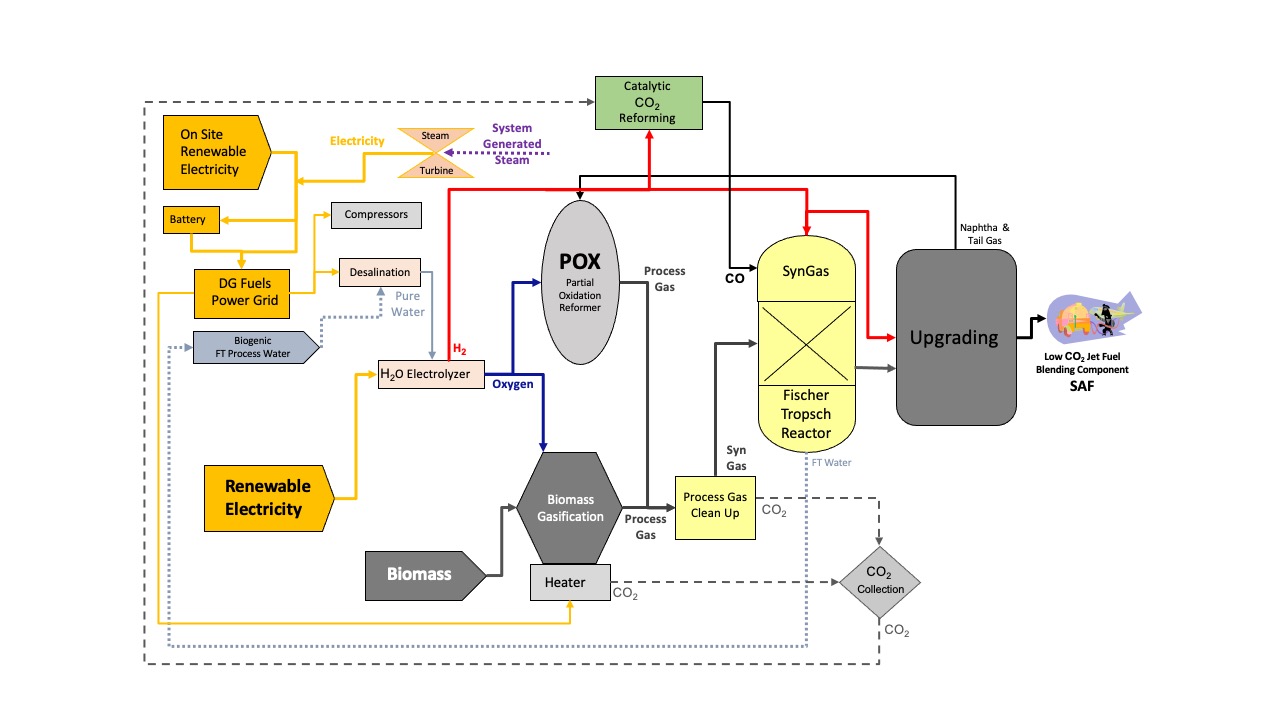technology
DGF’s innovative fuel production system better utilizes biomass feedstock over conventional biomass to liquids projects because of DGF’s use of waste CO2 to make additional fuel. Depending on feedstock carbon content, DGF produces up to 3.6 barrels of biogenic blending component per ton of biomass feedstock compared to most other competitors who achieve about 1.1>1.3 barrel per ton of feedstock.
The basis of DGF’s integrated fuel and energy technology is the proven Fischer-Tropsch process, in use for over 60 years. Existing plants around the world produce over 170,000 BBL per day of synthetic fuel using Fischer-Tropsch. These facilities typically use approximately one ton of coal to produce one BBL of hydrocarbons, with a life cycle CO2- emissions calculation that is slightly worse than equivalent fuels derived from conventional oil refining.
DGF’s method modifies the established Fischer-Tropsch system with several mechanisms that will decrease the CO2- life-cycle emissions and reduce the quantity of feed-stock required. These changes eliminate the need for carbon sequestration and reduce the system’s feed-stock handling costs and complexity. Additionally, DGF’s production method produces ASTM certified direct replacement fuel with greater fuel density, lower particulate and NOx emissions.
The feed-stock reduction is achieved primarily by supplementing the process with oxygen and hydrogen produced by water electrolysis units that are powered by clean wind generated electricity. DGF replaces the coal gasification used by others with biomass gasification and natural gas reforming. This simplifies implementation and further reduces new carbon emissions created in the process.

